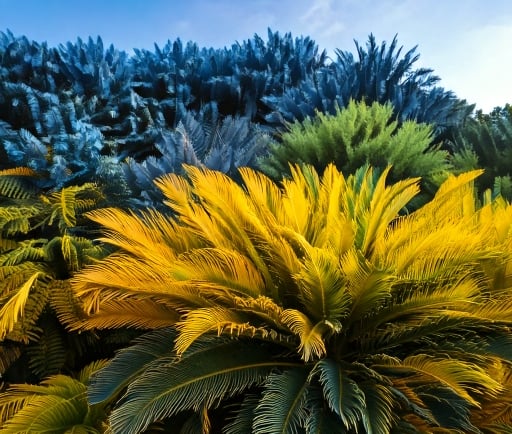The Flora of Exoplanets Orbiting Red Dwarfs


The Unique Environment of Red Dwarf Systems
Exoplanets orbiting red dwarfs, the most common type of star in our galaxy, present a fascinating array of potential habitats for life. These stars are characterized by their longevity and cooler temperatures, creating environments that could support diverse ecosystems. Unlike our sun, red dwarfs emit less light and heat, which influences the types of photosynthetic organisms that may thrive on planets within their habitable zones.
Photosynthesis and Color Variability
The process of photosynthesis is crucial for the survival of plant-like organisms on these exoplanets. On planets orbiting red dwarfs, where the light spectrum is different from that of our sun, we can anticipate unique adaptations among flora. For instance, plants may evolve to utilize the predominately red and infrared light emitted by their stellar host.
These adaptations could lead to the development of photosynthetic plants that exhibit a variety of colors, ranging from deep blues and bright yellows to rich reds and even striking purples. Such a spectrum of colors may not only serve as a way to maximize energy absorption but also as a form of communication or camouflage among the plant species.
The Implications for Astrobiology
The study of plants on exoplanets, particularly those orbiting red dwarfs, extends beyond mere curiosity; it has profound implications for astrobiology. Understanding how life adapts to different stellar environments enhances our comprehension of the potential for life beyond Earth. The color of these photosynthetic plants can serve as indicators of the atmospheric compositions and, consequently, the ecological dynamism on such exoplanets.
Moreover, investigating the biochemical pathways that would enable these hypothetical plants to thrive in varying light conditions is essential. This endeavor not only reveals insights about alien ecosystems but can also provide valuable information on the resilience of life forms in extreme environments.
Conclusion: The Diversity of Life in the Universe
The vastness of space ignites our imagination, particularly regarding the possibilities of life on exoplanets. The plants of exoplanets, especially those orbiting red dwarfs, may showcase remarkable adaptations that underscore nature's ingenuity. As we continue to explore the cosmos with advanced telescopes and missions, the prospect of discovering life forms that exhibit beautiful hues of blue, yellow, red, and purple remains a thrilling frontier in science. Through ongoing research, we inch closer to uncovering the secrets held by these distant worlds.
